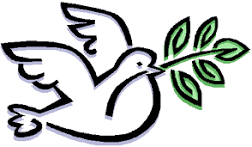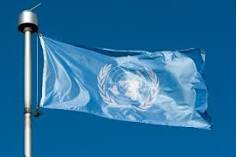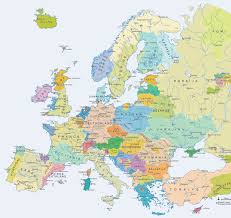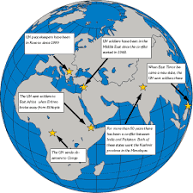NATION OF NATIONS




 The UN system is often referred to as a "family"of organizations. The charter of the UN, signed in San Francisco on 26 June 1945, defined six main organs of the new world body, each with specific tasks and functions. However, because it was impossible to foresee all the demands that might be made on the organization, provision was made for extending its capacities as the need arose. Thus, three of the main organs are specifically empowered to establish "such subsidiary organs" as may be considered necessary for the performance of their functions. In addition, Article 57 of the charter provides that the various specialized agencies established by intergovernmental agreement and having international responsibilities in economic, social, cultural, educational, health, and related fields "shall be brought into relationship" with the UN.
The UN system is often referred to as a "family"of organizations. The charter of the UN, signed in San Francisco on 26 June 1945, defined six main organs of the new world body, each with specific tasks and functions. However, because it was impossible to foresee all the demands that might be made on the organization, provision was made for extending its capacities as the need arose. Thus, three of the main organs are specifically empowered to establish "such subsidiary organs" as may be considered necessary for the performance of their functions. In addition, Article 57 of the charter provides that the various specialized agencies established by intergovernmental agreement and having international responsibilities in economic, social, cultural, educational, health, and related fields "shall be brought into relationship" with the UN.
 Since the signing of the charter, the UN has established numerous subsidiary organs and has entered into relationship with various independent organizations. Reproduced opposite is a chart showing the various organs and bodies within the UN system.
Since the signing of the charter, the UN has established numerous subsidiary organs and has entered into relationship with various independent organizations. Reproduced opposite is a chart showing the various organs and bodies within the UN system.  For assistance in interpreting the chart, a brief survey of the UN's main organs, the different categories of subsidiary organs, and the related agencies is given below. A detailed description of the functioning of each of the main organs and an account of the work of selected subsidiary organs are contained in later chapters of the first section of this volume. The structure and work of the UN specialized and technical agencies are described in the second section.
For assistance in interpreting the chart, a brief survey of the UN's main organs, the different categories of subsidiary organs, and the related agencies is given below. A detailed description of the functioning of each of the main organs and an account of the work of selected subsidiary organs are contained in later chapters of the first section of this volume. The structure and work of the UN specialized and technical agencies are described in the second section.


No comments:
Post a Comment